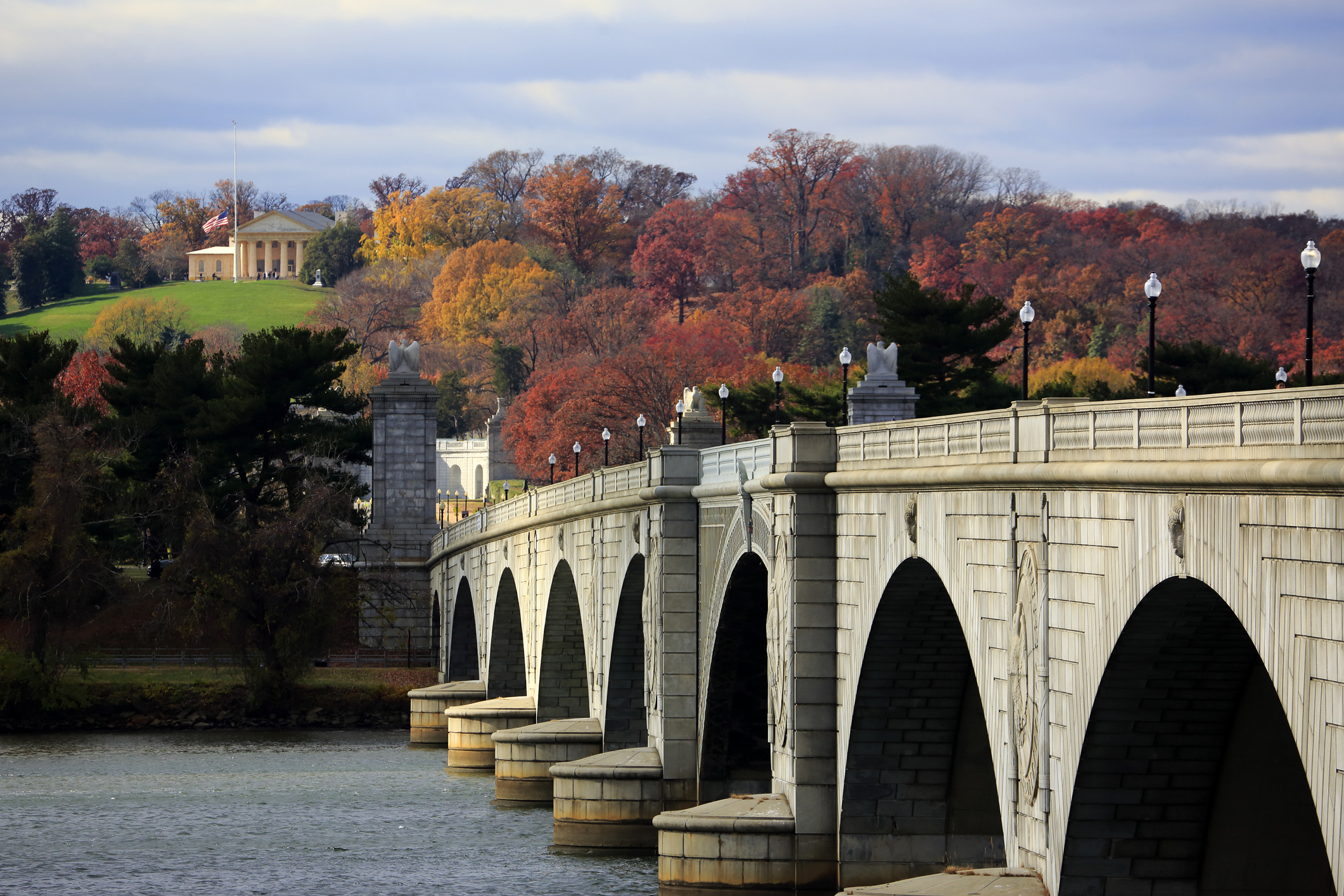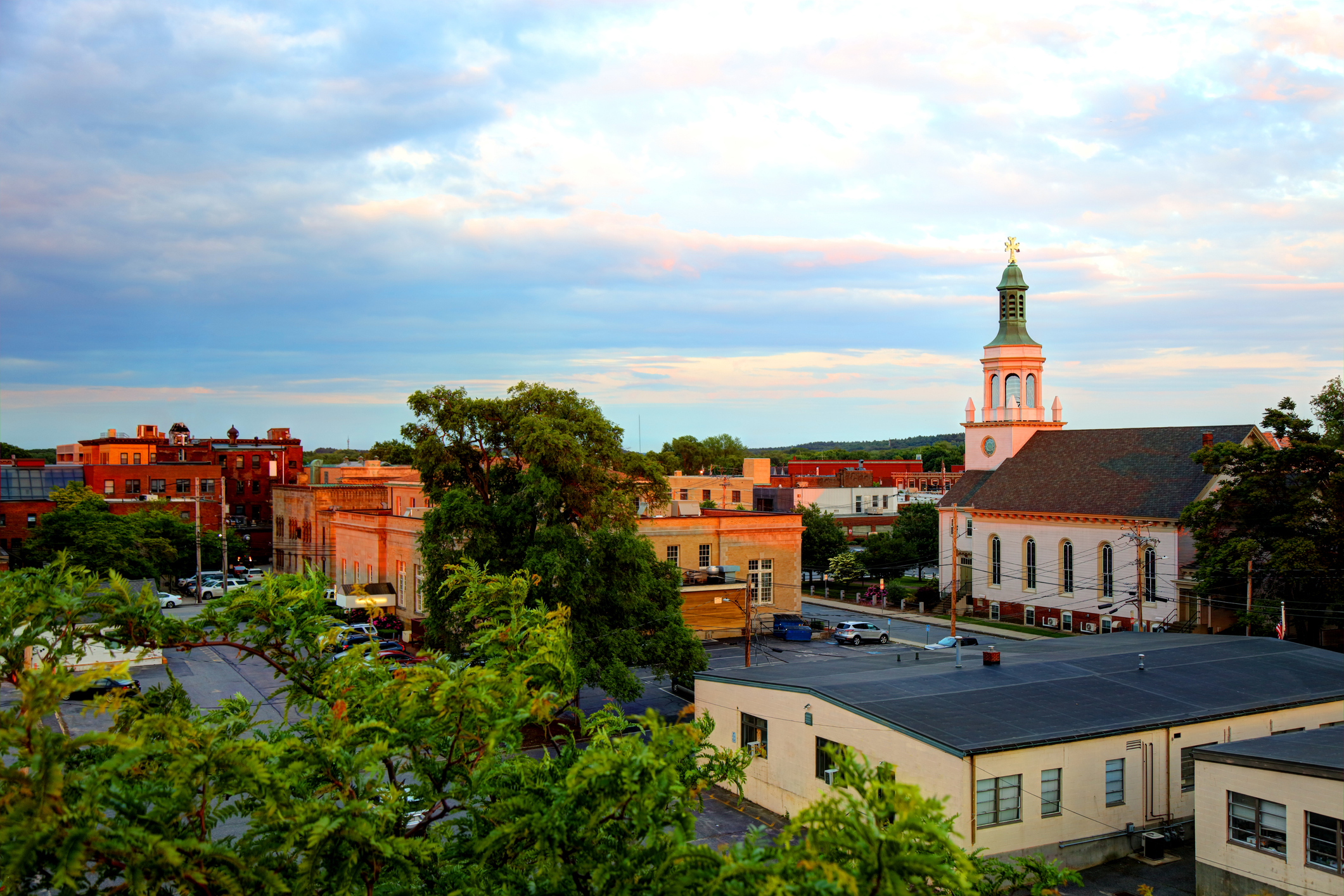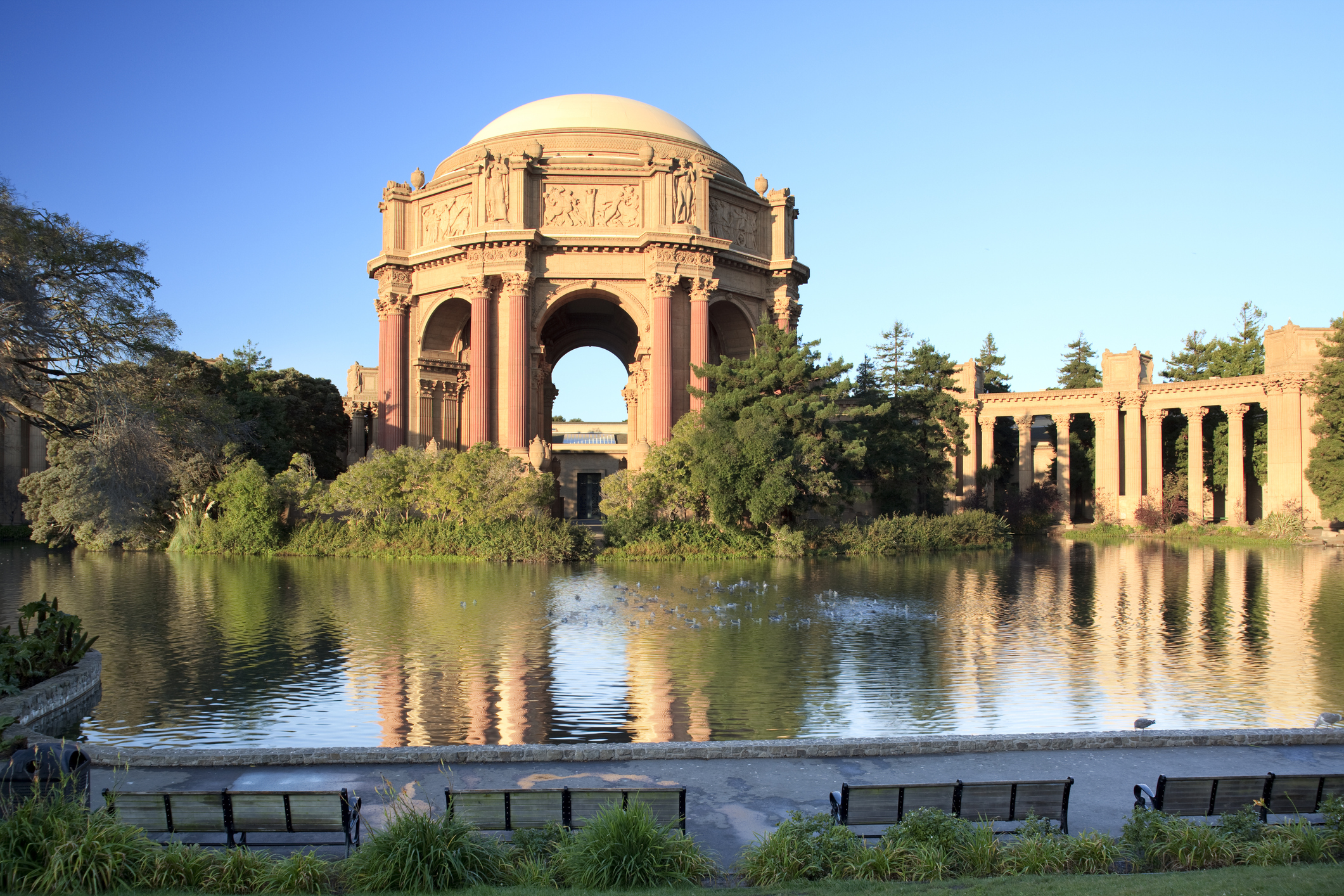The 15 Most Expensive Cities to Live in the US
From metro areas on both coasts to the middle of the Pacific Ocean, these are the most expensive cities to live in the U.S.

The most expensive cities in the U.S. are usually costly for a good reason — several, really. Residents are willing to pay extra for everything from housing to food to gas if it allows them to live somewhere with a wealth of employment opportunities or great weather. Others are looking for cosmopolitan living, with a host of restaurants, museums and other cultural options on tap. Many of these expensive cities appear in our ranking of the most expensive housing markets in the U.S.
However, in some cases, simple isolation plays a leading role in high prices. When pretty much everything has to be imported over long supply lines, prices are bound to be higher.
We should also note that the country is still feeling the effects of the worst bout of inflation to hit the U.S. economy in 40 years. This macro environment has made the nation's most expensive cities to live in even pricier than in recent years. Shelter was the "largest factor" behind the increase in inflation, according to the August CPI report.
From just $107.88 $24.99 for Kiplinger Personal Finance
Become a smarter, better informed investor. Subscribe from just $107.88 $24.99, plus get up to 4 Special Issues

Sign up for Kiplinger’s Free Newsletters
Profit and prosper with the best of expert advice on investing, taxes, retirement, personal finance and more - straight to your e-mail.
Profit and prosper with the best of expert advice - straight to your e-mail.
The Fed cut the fed funds rate three times, beginning in September 2024, but held steady at its previous meeting in August, leaving rates in a range of 4.25%-4.5%. The fed funds rate is a key overnight bank lending rate that influences other borrowing costs. At the September meeting, the Fed cut rates again, lowering the fed funds rate by 25 basis points, to a range of 4.00% to 4.25%. However, the connection between the fed funds rate and mortgage rates is indirect, and the recent fed rate cuts haven't impacted mortgage rates as of yet.
Mortgage rates have finally started to come down of late, possibly in anticipation of a September rate cut. As of September 17, 2025, the average interest rate for the benchmark 30-year fixed mortgage was 6.35%, a decrease of .15 basis points compared to the previous week. If you are planning to refinance, the national 30-year fixed refinance interest rate is sitting at 6.59% with an APR of 6.66%, according to Bankrate.
And yet, surprisingly, there's something of a silver lining to these metro areas' fast-rising prices. As counterintuitive as it may seem, recent research by New York University economist Edward Wolff shows that "inflation has been a great boon to middle-class U.S. households’ balance sheets, and has therefore helped to mitigate the increase in overall wealth inequality."
Something tells us that city dwellers coping with the daily reality of relentlessly rising costs probably take little solace in such long-term, macro-level developments. But, hey, at least something good might come out of their increasingly stretched budgets.
But back to the data. To determine just how much the most expensive cities to live in the U.S. really cost, we turned to the latest data from the Council for Community and Economic Research.
Its cost of living index collects scores upon scores of prices across 265 urban areas, covering housing, groceries, utilities, transportation, healthcare, and miscellaneous goods and services (such as getting your hair done or going to a movie).
We also gathered data on household incomes, home prices and unemployment rates for each city to provide context for local living costs.
Take a closer look at the 15 most expensive cities to live in the U.S.
15. Arlington, Virginia

Washington, D.C., and its close-in suburbs sport some of the highest living costs in the nation. So it should come as no surprise that Arlington makes the list for one of the most expensive cities to live in.
This suburb, home to the Pentagon and Arlington National Cemetery, sits just across the Potomac River from Washington, D.C. As with its neighbors, Arlington attracts ambitious, well-paid people — and has the home prices to prove it.
Housing-related expenses, including rents and mortgages, are almost twice the national average. Locals can thank an average home price of more than $1 million for much of that financial pain. Average principal and interest payments on mortgages top $5,000 a month in Arlington.
On the plus side for residents, Arlington's median household income of nearly $140,219 is among the highest in the U.S. Its per capita income of $87,159 is 79% more than the average of $48,689 in Virginia
14. Bethesda, Maryland

Cost of living: | 33.5% above U.S. average |
City population: | 69,966 |
Median household income: | $191,198 |
Median home value: | $1,147,800 |
Unemployment rate: | 3.5% |
What goes for Arlington goes for Bethesda, too. Residents pay a premium to live in the upscale D.C. suburb, which is home to the National Institutes of Health, Walter Reed National Military Medical Center and many other prestigious federal government institutions.
As a medical hub, it's perhaps befitting that healthcare costs run about 26% lower than the national average in Bethesda. Other major expense categories aren't too bad, either. Groceries (7.6%) and utilities (12.2% ) are more expensive in this D.C. suburb, and transportation is only 0.5% less expensive.
The biggest line item contributing to Bethesda's high cost of living? Not surprisingly, it's housing. Renters and homeowners pay a premium of 94% to the national average to keep roofs over their heads.
Maryland has both an inheritance tax and an estate tax. The gas tax in Maryland is $0.46 per gallon this year and is the seventh-highest gas tax in the nation.
13. Framingham, Massachusetts

Cost of living: | 34.5% above U.S. average |
City population: | 71,866 |
Median household income: | $103,841 |
Median home value: | $624,800 |
Unemployment rate: | 3.7% |
Framingham, Massachusetts, is defined by its location along the Sudbury River, approximately 20 miles west of Boston. Its location makes it a central point for major routes like Route 9 and the Massachusetts Turnpike (I-90), linking it to surrounding towns and the wider region.
There are several ponds and reservoirs, including Farm Pond and parts of the Sudbury River's reservoir system. Residents can enjoy several parks and conservation lands, such as Cushing Memorial Park and Callahan State Park, offering both recreation areas and natural wooded trails..
Framingham's economy has evolved from a 19th-century industrial hub full of textile and carpet mills to a modern center for technology, retail, and life sciences. As a result, a significant portion of the city's workforce is employed in professional, scientific, and management services, reflecting the shift towards a knowledge-based economy.
The city is home to the corporate headquarters of major national companies, including TJX Companies (parent company of TJ Maxx, Marshalls and HomeGoods), Staples, and the Bose Corporation. Framingham also hosts major employers like MetroWest Medical Center and has a strong presence in the biotech sector, with companies like Sanofi.
Cultural life is vibrant, with attractions that highlight both history and the arts. The Danforth Art Museum, affiliated with Framingham State University, features impressive exhibitions and studio art classes. The Framingham History Center preserves and shares the city's rich past, including the story of the landmark Framingham Heart Study.
12. Washington, D.C.

Cost of living: | 38.1% above U.S. average |
City population: | 678,972 |
Median household income: | $108,210 |
Median home value: | $715,500 |
Unemployment rate: | 6.0% |
When it comes to living costs, the nation's capital is a tale of two cities. Housing-related expenses, including rents and mortgages, are by far the most burdensome at 2.3 times the national average, according to C2ER, but other expenses aren't too bad. In fact, D.C. healthcare costs are a bit below the national average.
Groceries run about 4% above the national average, while utilities are about 2.4% more expensive. Miscellaneous goods and services are pricier by 16.1%. Happily, transportation expenses aren't overly onerous, at less than 13.1% above the U.S. average. A wide-ranging bus and metro system makes getting to and around the District of Columbia affordable.
And, of course, numerous museums and historical sites are free to visit, too.
Be that as it may, the average price of a home in D.C. stands at $1,137,933. Meanwhile, the average apartment rents for $3,495 a month — or $1,871 a month more than the U.S. average.
11. Seattle, Washington

Cost of living: | 41.2% above U.S. average |
City population: | 755,081 |
Median household income: | $120,608 |
Median home value: | $898,600 |
Unemployment rate: | 4.0% |
Seattle, Washington, is a major Pacific Northwest city known for its stunning natural setting, economic innovation and vibrant cultural scene. Seattle is uniquely situated on an isthmus between the salt waters of Puget Sound to the west and the freshwater of Lake Washington to the east. The city is framed by two prominent mountain ranges: the Olympic Mountains to the west and the Cascade Mountains to the east. And, on clear days, Mount Rainier dominates the skyline.
Seattle's economy has transformed from its historical roots in the lumber and shipbuilding industries to a modern powerhouse of technology and trade. The region is now a hotbed for software, e-commerce, and cloud computing. Today, the city is home to the headquarters of Amazon and a significant presence for companies like Microsoft (headquartered in nearby Redmond), Google and Meta.
The Port of Seattle is a crucial gateway for trade with Asia and Alaska, making the city a significant player in international logistics and commerce.
Home to Starbucks, the city is the birthplace of national coffee culture. While Boeing moved its headquarters to Chicago, it still maintains a massive manufacturing presence in the Seattle area. And it's also the home of the corporate offices of Costco Wholesale.
Washington state is one of nine states with no state income tax. While retirement income, such as pensions, 401(k) and IRA distributions and Social Security payments aren't taxed, there is a 7% capital gains tax. Only the portion of gains above the threshold ($250,000) is subject to the tax, and some assets are exempt from the tax.
With a strong emphasis on the outdoors, Seattle provides numerous opportunities for hiking, biking, kayaking, and skiing. Discovery Park is a massive 560 acres, making it the city's largest urban park, which offers miles of trails and shoreline.
The iconic Space Needle and Pike Place Market are essential landmarks. Other notable attractions include the Museum of Pop Culture, which celebrates music, film, and video games; the Seattle Art Museum; and the Chihuly Garden and Glass, showcasing the work of renowned glass artist Dale Chihuly.
10. Boston, Massachusetts

Cost of living: | 44.8% above U.S. average |
City population: | 652,442 |
Median household income: | $96,931 |
Median home value: | $703,600 |
Unemployment rate: | 4.9% |
With its unparalleled collection of universities, hospitals, historical sites, and tech and biotech employers, it's easy to see why Boston is such an appealing place to live. And while there's no question the city's popularity comes at a high cost, it's not nearly as high as some East Coast cities that are often mentioned in the same breath as Boston.
Boston has a high concentration of students, recent grads, and young professionals, and they require some level of affordability to get by while they're starting out. Utilities, for example, are "only" 44.8% more expensive than the national average. Healthcare costs 34.4% more than what the typical American pays, and miscellaneous goods and services are 15.4% more expensive.
Housing-related costs, however, are a killer, or 114.3% higher than the national average. Renters and homeowners pay more than twice the national average for their domiciles. For example, the average apartment rents for $4,157 a month in Boston. That compares with a national average of $1,624 a month, according to C2ER. The average price of a Boston home comes to $1,060,406 vs $540,508 nationally.
In another blow to residents' wallets, Massachusetts isn't particularly tax-friendly. It's rated one of the Worst States to Retire in 2025 if You Hate Paying Taxes and one of the 10 Least Tax-Friendly States for Middle-Class Families by the Kiplinger tax experts.
9. San Diego, California

Cost of living: | 46.1% above U.S. average |
City population: | 1,388,312 |
Median household income: | $105,780 |
Median home value: | $923,900 |
Unemployment rate: | 5.2% |
San Diego, with its miles of beaches and nearly ideal climate, is a paradise for those who love the outdoors. Be it surfing, sailing, hiking, biking, golfing, or just exploring Balboa Park, this city on the Pacific has something for everyone.
And for those who prefer more sedentary activities, San Diego offers a world-class zoo, museums, professional sports teams and a wide-ranging restaurant scene. You can also spend the night on the USS Midway, the longest-serving aircraft carrier named after the famous battle in World War II.
What's not to like?
Well, for one thing, San Diego has one of the most expensive housing markets in the U.S. At more than $1.16 million, the average home price is 114% greater than the national average.
Or consider it this way: San Diego's median home value comes to $923,900, or 70.9% higher than the U.S. median of $540,508. The city's median household income, however, is only about one-third greater than the U.S. level. Renters feel the pinch, too, with the average apartment going for $3,132 a month vs the national average of $1,624.
8. Los Angeles, California

Cost of living: | 49.4% above U.S. average |
County population: | 3,898,747 |
Median household income: | $79,701 |
Median home value: | $828,700 |
Unemployment rate: | 6.4% |
Few cities can top Los Angeles for excess and glamor, but most of its residents don't work in Hollywood or shop on Rodeo Drive. While high living expenses make L.A. one of the most expensive cities to live in the U.S., median annual incomes are $1,903 below the national level.
And yet the allure of the nation's second-largest city remains strong. From Hollywood to Beverly Hills to Venice Beach, few cities can claim as many famous locales. For those who seek culture beyond the Kardashians, L.A. boasts several important museums and the world-class Los Angeles Philharmonic.
Just be forewarned that L.A.'s notorious traffic helps push transportation costs 28% above the national average. And although groceries, utilities, and miscellaneous goods and services are only about 7.9% to 39.1% costlier than the U.S. average, housing bleeds residents dry. Angelenos get a break on health care costs that come in 1% below the national average.
Indeed, housing-related expenses, including rents and mortgages, run 131.5% above the national average in Los Angeles. For example, the average price of a home in L.A. comes to almost $1.35 million, vs the national average of $540,508. Average rent ($3,011), meanwhile, is almost twice as high as the U.S. average.
Lastly, there's another thing that's unhelpfully elevated in the City of Angels. While the U.S. unemployment rate sits at 4.8%, Los Angeles' rate stands at 6.4%.
7. Queens, New York

Cost of living: | 50.6% above U.S. average |
County population: | 2,252,196 |
Median household income: | $81,929 |
Median home value: | $692,500 |
Unemployment rate: | 5.1% |
Queens is one of the most ethnically diverse urban areas in the world. In fact, it holds the Guinness World Record for “most ethnically diverse urban area on the planet.” It's also the most linguistically diverse, with at least 138 languages spoken throughout the borough. But the cost of living in this borough is especially high — a bit over 50% more than the rest of the country.
Housing in Queens is marginally cheaper than in neighboring boroughs Manhattan and Brooklyn, but remains elevated. Overall, prices are 152.2% over the national average. The average home sells for almost $1.36 million, and rent will cost you $3,937 a month; both expenses are more than double what most people pay.
Queens is also the home of the Mets and the US Open tennis tournament, and the former home of the New York World's Fair in 1964, now Flushing Meadows-Corona Park. The first incarnation of It's a Small World, which debuted at the 1964 World's Fair, was an afterthought and nearly did not happen.
The median household income in Queens is $81,929, only $325 above the national average. That is more than the folks in Brooklyn earn and less than what Manhattanites earn.
New York took fourth place on Kiplinger’s Most Expensive States to Live in for Homeowners. Median real estate taxes paid were over $6,450, and homeowners age 65 and older may qualify for a property tax exemption or rebate.
6. Brooklyn, New York

Cost of living: | 59.4% above U.S. average |
Borough population: | 2,561,225 |
Median household income: | $76,912 |
Median home value: | $880,300 |
Unemployment rate: | 5.8% |
| Row 5 - Cell 0 | Row 5 - Cell 1 |
Technically, Brooklyn is one of the five boroughs that make up New York City, but in the past couple of decades, it has emerged as something of a metropolis unto itself. Indeed, if Brooklyn were an independent city, its population would be on par with Chicago, the third-largest city in the nation.
Prospect Park, a 585-acre urban oasis, opened nine years after Central Park and shared the same landscape architect, Frederick Law Olmsted. Within walking distance are the Brooklyn Botanic Garden and the Brooklyn Museum.
Once upon a time, Brooklyn was considered a viable alternative for those who couldn't afford to live in Manhattan. Not anymore. Housing-related expenses, including rents and mortgages, are almost four times higher than the national average.
And yet, the median household income in Brooklyn of $76,912 is lower than the U.S. median. It's also almost $24,166 lower than the median household income in Manhattan.
Happily, not everything in Brooklyn is eye-wateringly expensive. Utilities costs are only about 19.1% higher than their respective national averages. And transportation expenses run just 13.4% above what the typical American pays. Health care, however, is about 28.8% more expensive than the U.S. average.
Adding to Brooklynites' pocketbook pain is the fact that, according to the New York state tax guide, this state is one of the least tax-friendly states for both retirees and middle-class families.
5. San Francisco, California

Cost of living: | 60.1% above U.S. average |
City population: | 1,535,341 |
Median household income: | $138,562 |
Median home value: | $1,424,900 |
Unemployment rate: | 4.4% |
Years of relentless growth driven by high-paid tech workers have given San Francisco one of the highest living costs in the country, meaning even those with fat paychecks can struggle to make ends meet.
Houses are famously expensive — a seemingly insurmountable obstacle for aspiring homeowners. The average home price is a staggering $1.35 million in San Francisco, according to C2ER's cost of living index, and the median home value is the second highest among the 15 most expensive cities to live in the U.S.
Renters don't fare much better. The average rent for an apartment in San Francisco is $3,739 a month. That's 2.3 times the national average. Indeed, overall, housing-related costs in San Francisco are almost 2.5 times greater than the national average.
And the nosebleed prices don't stop there. Groceries, utilities, healthcare, and transportation expenses all run anywhere from 13.7% to almost 49.9% more than what the typical American pays. Miscellaneous goods and services are only 22.1% more expensive than the national average.
4. Orange County, California

Cost of living: | 61.7% above U.S. average |
County population: | 3,135,755 |
Median household income: | $110,042 |
Median home value: | $961,400 |
Unemployment rate: | 4.8% |
Orange County, known as The O.C. for short, is synonymous with wealth, so much so that there was an entire TV series made about it in the 2000s.
Several large municipalities make up the county, which abuts Los Angeles to the southeast, including Anaheim, Santa Ana and Irvine. But it's the smaller, tonier enclaves such as Newport Beach (median home value: $2 million) that cement Orange County's reputation for sheltering some of Southern California's richest and most famous.
The average home price for all of Orange County sits at almost $1.645 million, according to C2ER. That makes it the sixth priciest market in the country. However, at $3,056 a month, apartment rents are only a bit under twice the national average.
All in all, housing in the O.C. costs 173.3% more than what the typical American pays. Other budget-stressors include groceries, which cost about 7.7% more than the U.S. average, and transportation, which is 39.1% pricier.
On the brighter side of the ledger, healthcare costs are 4.1% lower than the national average, and utilities come in above average, costing 25.2% more.
3. San Jose, California

Cost of living: | 81.1% above U.S. average |
City population: | 1,945,767 |
Median household income: | $153,202 |
Median home value: | $1,393,400 |
Unemployment rate: | 4.9% |
San Jose possesses all of the grand natural beauty you might associate with California. The downtown has streets lined with palm trees and you can watch a majestic sunset over Silicon Valley. This all comes at a high price and that is why it earned the third spot on this list.
The tech roots of this area run deep. IBM established its first West Coast operations in San Jose in 1943 and opened an IBM Research lab in 1952. The hard disk drive was invented there. Today, San Jose is at the epicenter of tech development in America and hosts major facilities for many companies, including Ericsson, Hewlett-Packard Enterprise, Hitachi, IBM, Lockheed Martin, Qualcomm and the North American headquarters of Samsung Semiconductor.
The abundance of high-paying jobs is necessary to live and work in the area. The typical household income in San Jose is $153,202, and that is almost twice the national average of $81,604. If you need to wake up with a cup of coffee before you start your work day, it will cost 18% more than in most other cities.
Housing costs are 232% higher than the national average, and the mean price of a home is $1,393,400. That is more than 2.57 times what most people pay nationwide at $540,508. The cost of heating and cooling your home, as well as charging your EV, is in line with housing prices and is 43.1% higher than average, although it is cheaper than neighboring San Francisco, where the costs are 49.9% above the norm.
California's state tax guide paints a bleak picture for taxes. California has among the highest taxes in the nation. Sales and income taxes are generally high, but effective property tax rates are below the national average.
Retirees don’t fare much better. California is one of Kiplinger's Worst States to Retire in 2025 if You Hate Paying Taxes. Most types of retirement income are taxable in California; retirees might pay an income tax rate as high as 14.4% if they continue to work and their income tops $1,000,000.
2. Honolulu, Hawaii

Cost of living: | 82.1% above U.S. average |
City population: | 341,753 |
Median household income: | $84,907 |
Median home value: | $831,600 |
Unemployment rate: | 2.5% |
To enjoy the perks of living in such a remote Pacific paradise, Honolulu residents pay more than they would on the mainland for pretty much everything — and it's not hard to understand why. Most goods sold in Hawaii must arrive either by boat or by plane, which jacks up the price considerably.
Honolulu has by far the most expensive utilities of all 265 urban areas surveyed by C2ER. Utilities cost a whopping 94.4% more than what folks pay on the U.S. mainland. They cost 22.3% more than the most expensive city on the mainland for utilities, Fairbanks, Alaska, where costs are 116.7%% above the norm.
Groceries don’t trail far behind. For example, eggs cost 37% above the national average, and bananas cost an eye-watering 102% more. Getting to the store costs more, too. Overall, transportation costs are 42.9% more expensive, and locals shell out upwards of 25.9% more for healthcare.
But, as always, housing is the biggest income-eater. Housing-related costs are more than three times the national average in Honolulu. Heck, the average home carries a price of almost $1.71 million.
Residents do catch at least one break when it comes to their finances. The Hawaii state tax guide shows it's among the more tax-friendly states for middle-class families on this list, and is one of the most tax-friendly states for retirees. It also earned a spot on Kiplinger's 10 Most Tax-Friendly States for Retirees.
1. Manhattan, New York

Cost of living: | 132.0% above U.S. average |
Borough population: | 1,597,451 |
Median household income: | $101,078 |
Median home value: | $1,010,800 |
Unemployment rate: | 5.2% |
| Row 5 - Cell 0 | Row 5 - Cell 1 |
If you've ever been to Manhattan, you don't need us to tell you that it's an expensive place to visit.
But it's even more expensive to live there.
With space at a premium and location paramount, the median home value in Manhattan is second only to housing prices in the tech hubs of San Jose and San Francisco on our list of most expensive cities to live in the U.S. The average apartment rent stands at a stunning $5,735 a month, blowing away every other city tracked by C2ER. Meanwhile, the average home price is $2.95 million.
The budget-busting doesn't stop there. Residents pay a premium of almost 50% for health care and 38% more for a doctor's visit. While transportation runs 20.9% above average. Meanwhile, miscellaneous goods and services are 27.7% more expensive. For example, if you want to go to the movies, you'll pay 73% more for a ticket at $22.47. Yoga classes cost 38.8% more than the national average. All of this and more conspire to make Manhattan the most expensive city in the nation, by a lot.
By the way, you'll need to like crowds if you hope to make it in the Big Apple: Manhattan packs in almost 70,520.8 residents per square mile, according to the U.S. Census Bureau. For context, San Francisco, which has one of the highest population densities in the U.S., hosts a mere 17,323.2 residents per square mile.
How we picked the most expensive cities in the U.S.
Source: C2ER's Cost of Living Index, 2025 Annual Average Data, published August 2025. Index data is based on average prices of goods and services collected during the first quarter of 2025, with index values based on the 2023 US Consumer Expenditure Survey. Population data, household incomes, home values, poverty rates and other demographic information are from the U.S. Census Bureau. Local unemployment rates, courtesy of the U.S. Bureau of Labor Statistics and the Federal Reserve Bank of St Louis, are not seasonally adjusted and are as of September, 17 2025, for the month of July 2025, which is the latest available final data. Local unemployment rates for New York City, courtesy of New York State Department of Labor Labor Statistics for the New York City Region and local unemployment rate for San Francisco, courtesy of State of California Employment Development Department.
Related Content
Profit and prosper with the best of Kiplinger's advice on investing, taxes, retirement, personal finance and much more. Delivered daily. Enter your email in the box and click Sign Me Up.

Dan Burrows is Kiplinger's senior investing writer, having joined the publication full time in 2016.
A long-time financial journalist, Dan is a veteran of MarketWatch, CBS MoneyWatch, SmartMoney, InvestorPlace, DailyFinance and other tier 1 national publications. He has written for The Wall Street Journal, Bloomberg and Consumer Reports and his stories have appeared in the New York Daily News, the San Jose Mercury News and Investor's Business Daily, among many other outlets. As a senior writer at AOL's DailyFinance, Dan reported market news from the floor of the New York Stock Exchange.
Once upon a time – before his days as a financial reporter and assistant financial editor at legendary fashion trade paper Women's Wear Daily – Dan worked for Spy magazine, scribbled away at Time Inc. and contributed to Maxim magazine back when lad mags were a thing. He's also written for Esquire magazine's Dubious Achievements Awards.
In his current role at Kiplinger, Dan writes about markets and macroeconomics.
Dan holds a bachelor's degree from Oberlin College and a master's degree from Columbia University.
Disclosure: Dan does not trade individual stocks or securities. He is eternally long the U.S equity market, primarily through tax-advantaged accounts.
-
 Ask the Editor: Tips for Filing Your 1040
Ask the Editor: Tips for Filing Your 1040Ask the Editor In this week's Ask the Editor Q&A, Joy Taylor answers questions on preparing and filing your 2025 Form 1040.
-
 Is Direct Primary Care Right for Your Health Needs?
Is Direct Primary Care Right for Your Health Needs?With the direct primary care model, you pay a membership fee for more personalized medical services.
-
 Smart Ways to Share a Credit Card
Smart Ways to Share a Credit CardAdding an authorized user has its benefits, but make sure you set the ground rules.
-
 I'm 61 and Want a Divorce, but I Worry About My Finances. Should We Live Separately but Stay Married?
I'm 61 and Want a Divorce, but I Worry About My Finances. Should We Live Separately but Stay Married?We asked Certified Divorce Financial Analysts for advice.
-
 I'm a Real Estate Expert: 2026 Marks a Seismic Shift in Tax Rules, and Investors Could Reap Millions in Rewards
I'm a Real Estate Expert: 2026 Marks a Seismic Shift in Tax Rules, and Investors Could Reap Millions in RewardsThree major tax strategies will align in 2026, creating unique opportunities for real estate investors to significantly grow their wealth. Here's how it works.
-
 What to Watch for When Refinancing Your Home Mortgage
What to Watch for When Refinancing Your Home MortgageA smart refinance can save you thousands, but only if you know how to avoid costly pitfalls, calculate true savings and choose the right loan for your goals.
-
 Builders Are Offering Big Mortgage Incentives — What Homebuyers Should Watch For
Builders Are Offering Big Mortgage Incentives — What Homebuyers Should Watch ForBuilder credits and below-market mortgage rates can ease affordability pressures, but the savings often come with trade-offs buyers should understand before signing.
-
 Do Self-Storage REITs Deserve Space in Your Portfolio? It's a Yes From This Investment Adviser
Do Self-Storage REITs Deserve Space in Your Portfolio? It's a Yes From This Investment AdviserSelf-storage is an overlooked area of the real estate market, even though demand is strong. Investors can get in on the action through a REIT.
-
 Trump Signals Plan to Ban Institutional Investors From Buying Single-Family Homes
Trump Signals Plan to Ban Institutional Investors From Buying Single-Family HomesThe president says the move could improve housing affordability. Here’s what the data show about investor ownership, recent buying trends and what it could mean for homebuyers.
-
 We Are Retired, Mortgage-Free, With $970K in Savings. My Husband Wants to Downsize to Lower Our Costs, but I Love Our House. Help!
We Are Retired, Mortgage-Free, With $970K in Savings. My Husband Wants to Downsize to Lower Our Costs, but I Love Our House. Help!We've paid off our mortgage, have $970K in savings and $5K each month from Social Security. Kiplinger asked wealth planners for advice.
-
 Is Fear Blocking Your Desire to Retire Abroad? What to Know to Turn Fear Into Freedom
Is Fear Blocking Your Desire to Retire Abroad? What to Know to Turn Fear Into FreedomCareful planning encompassing location, income, health care and visa paperwork can make it all manageable. A financial planner lays it all out.

